Research
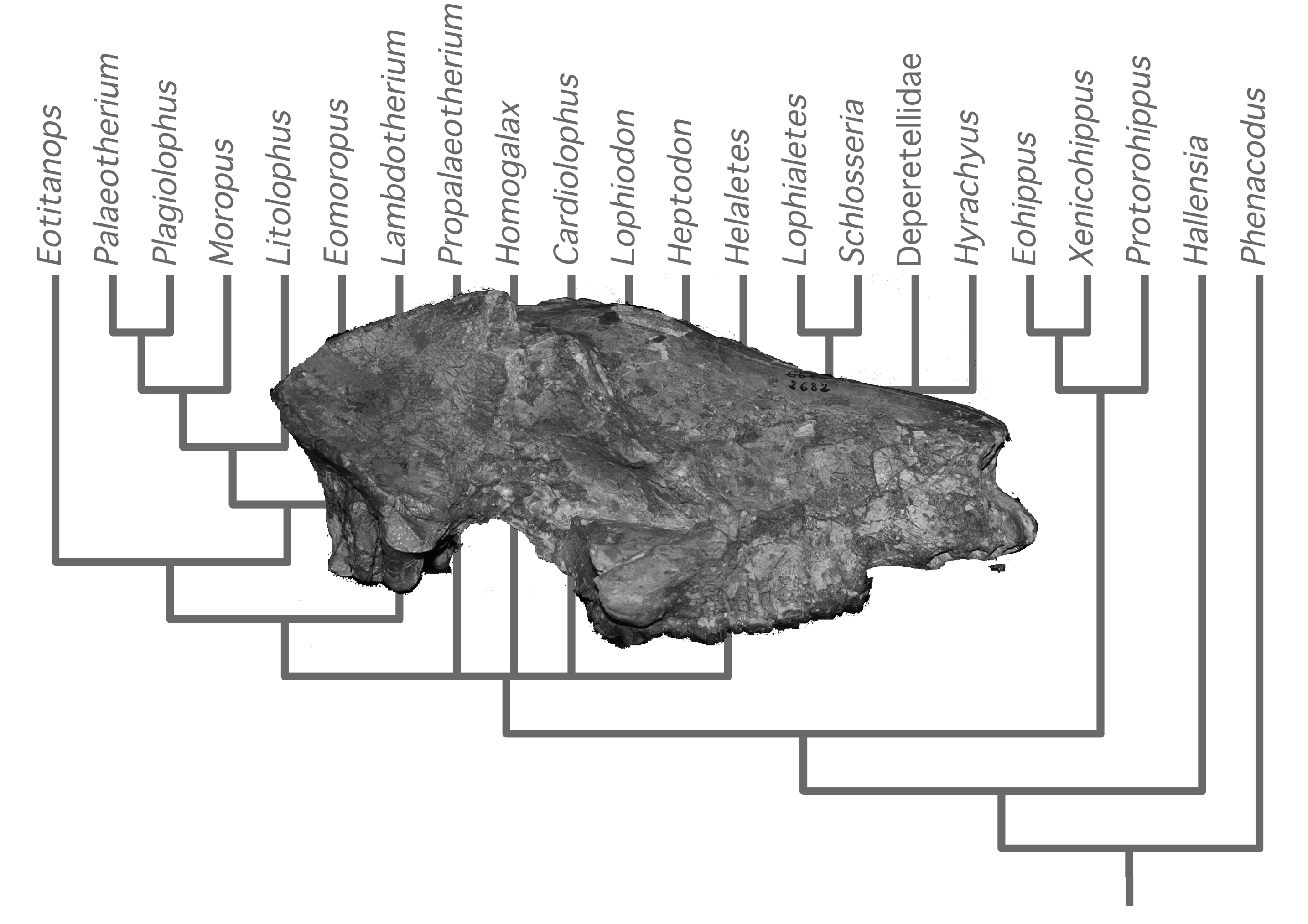
Research

Papers: (* indicates undergraduate researcher)
Holbrook, L.T. and J. LaPergola*. (2011) A new genus of perissodactyl (Mammalia) from the Bridgerian of Wyoming with comments on basal perissodactyl phylogeny. Journal of Vertebrate Paleontology 31(4):895-901.
Koenigswald, W. v., L.T. Holbrook, and K.D. Rose. (2011) Diversity and evolution of Hunter-Schreger band configuration in tooth enamel of Perissodactyla (Mammalia). Acta Palaeontologica Polonica 56(1):11-32.
Holbrook, L.T. (2009) Osteology of Lophiodon and its phylogenetic implications. Journal of Vertebrate Paleontology 29(1):212-230.
Holbrook, L.T., S.G. Lucas, and R.J. Emry. (2004) Skulls of the Eocene perissodactyls (Mammalia) Homogalax and Isectolophus. Journal of Vertebrate Paleontology 24(4):951-956.
Lucas, S.G., and L.T. Holbrook. (2004) The skull of the Eocene brontothere Lambdotherium and its phylogenetic significance. Bulletin of the New Mexico Museum of Natural History and Science 26:81-87.
Lucas, S.G., L.T. Holbrook, and R.J. Emry. (2003) Isectolophus from the Zaysan Basin, Kazakstan, and its biochronological significance. Journal of Vertebrate Paleontology 23(1): 238—243.
Holbrook, L.T. (2002)
The unusual development of the sagittal crest in the Brazilian tapir (Tapirus
terrestris).
Journal of Zoology, London 256:215-219.
Holbrook, L.T. (2001) Comparative osteology of tapiromorph perissodactyls (Mammalia). Zoological Journal of the Linnaean Society 132(1):1-54.
Lucas, S.G., L.T. Holbrook, and R.J. Emry. (2001) The lophialetid ceratomorph Eoletesfrom the Eocene of the Zaysan Basin, Kazakstan. Proceedings of the Biological Society of Washington 114(4):988-992.
Holbrook, L.T. (1999) The phylogeny and classification of tapiromorph perissodactyls (Mammalia). Cladistics 15(3):331-350.
Holbrook, L.T. and S.G. Lucas. (1997) A new genus of rhinocerotoid from the Eocene of Utah, and the status of North American "Forstercooperia." Journal of Vertebrate Paleontology 17(2):384-396.
Research interests:
The focus of my research is
mammal
phylogeny and evolution. One of the most vexing questions in
mammalian
biology is that of the interrelationships of the major groups (orders)
of mammals. Many sorts of data have been brought to bear on this
question, but we are still coming to grips with the relationships among
the full diversity of living and fossil mammals. A reliable
phylogeny
is an important requirement for many other studies of mammal
evolution.
Thus, much of my research is in some way related to understanding
mammal
phylogeny.
Research projects:
Phylogeny of perissodactyls:
I am currently looking at the
evolutionary
relationships among the Perissodactyla, the order including horses,
rhinos,
tapirs, and their fossil relatives. This research requires me to
travel to various museums around the world in order to examine numerous
specimens of fossil perissodactyls. I score different
perissodactyl
taxa for various similarities of the skeleton and use cladistic methods
to come up with a tree of evolutionary relationships.
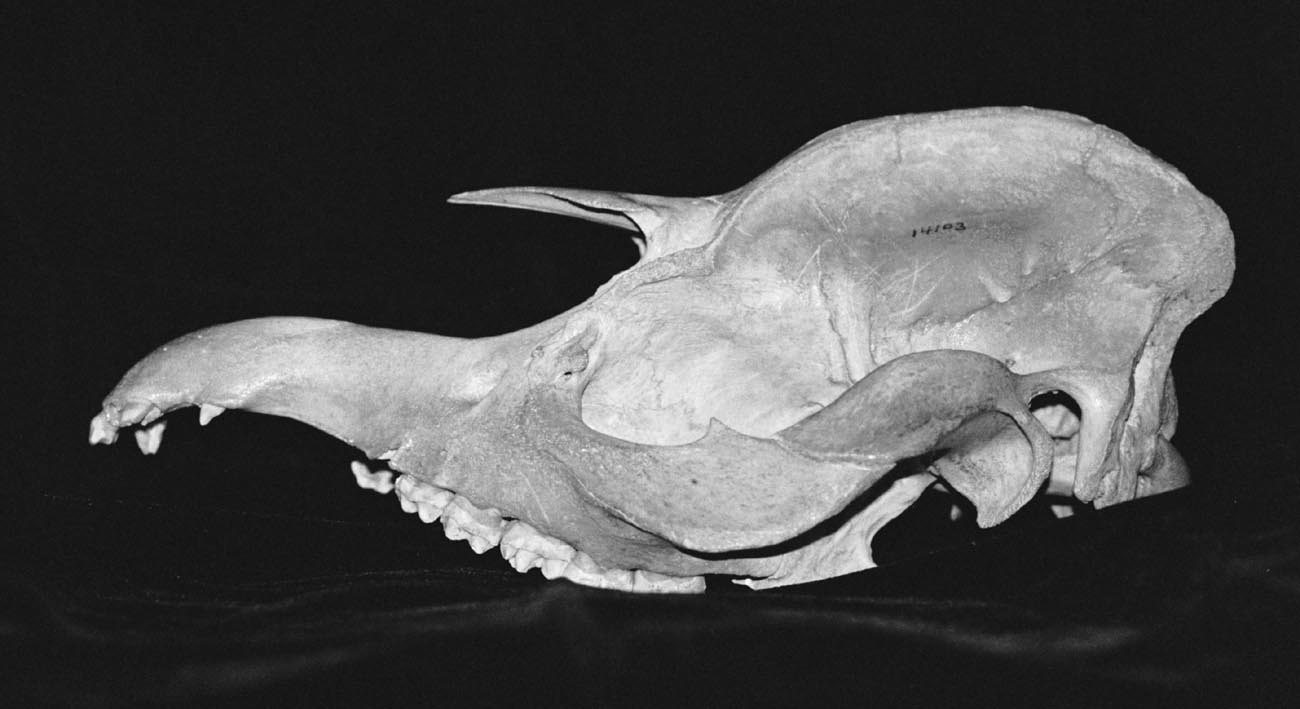
Skull of a tapir (Tapirus terrestris)
The phylogeny of
perissodactyls
has mainly been interpreted from teeth, because almost all
perissodactyls
(including fossils) are known from at least some teeth, and many are
known
only from teeth. Workers studying interordinal relationships, on
the other hand, are more interested in other aspects of the skull and
skeleton
of perissodactyls, since these provide a large proportion of the
data.
In order to accomodate both types of questions, my own work focuses on
skull and skeletal morphology of perissodactyls.
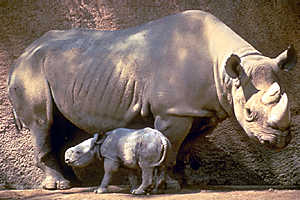
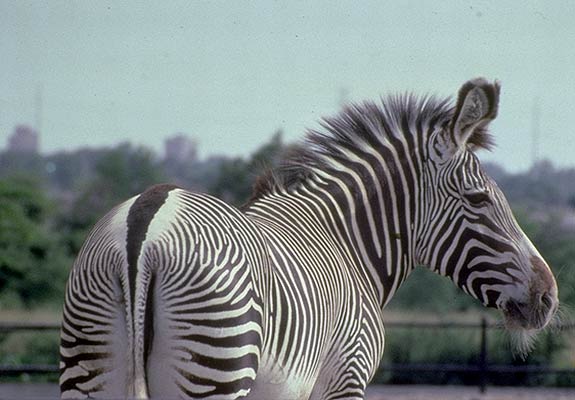
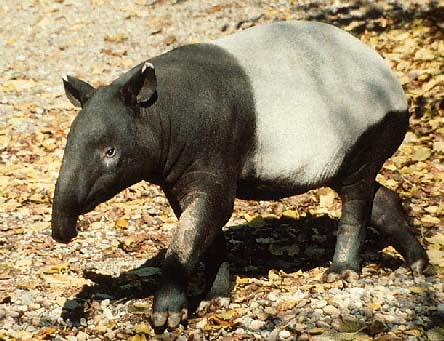
Black
rhino (Diceros bicornis)
Grevy's zebra (Equus
grevyi) Malaysian tapir (Tapirus indicus)
Besides my own work, I am
collaborating
with a number of other paleontologists on projects involving
perissodactyls.